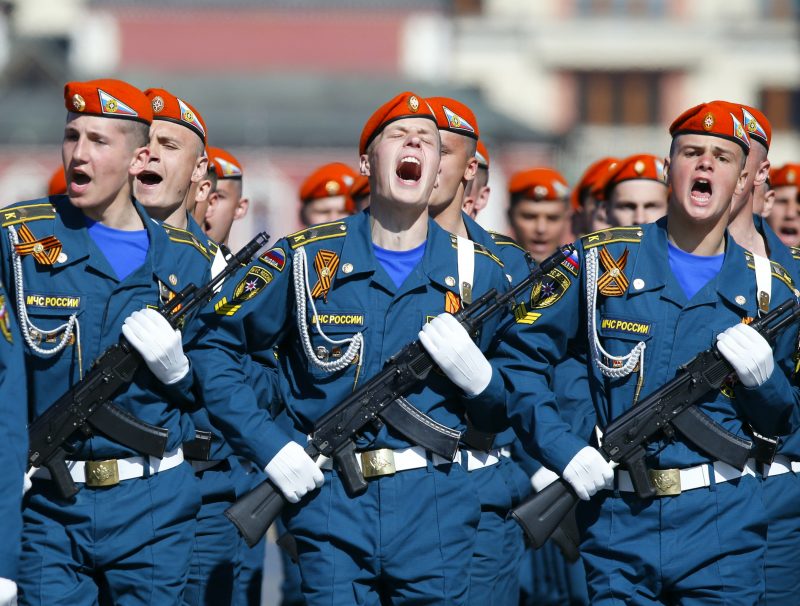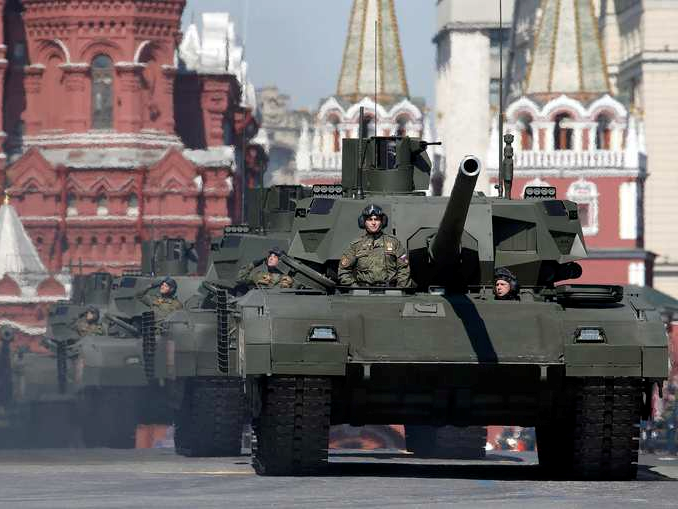Moscow is assembling up to 100,000 troops for a massive deployment along NATO borders, the New York Times reported Tuesday.
The buildup is part of a military exercise called Zapad, or Russian for “west,” which is held every four years, according to the Washington Post. This year it will be held in Belarus, the Baltic Sea, parts of western Russia, and Kaliningrad, the New York Times said.
Moscow, however, told NATO that less than 13,000 troops would take part in the exercise, according to The Times. It also said that observers would be allowed if it exceeded that number, abiding by the Vienna document, a Cold War-era treaty that requires observers for exercises involving more than 13,000 troops.
“First and foremost, the messaging is, ‘We’re watching you; we’re strong; we’ve learned a lot; don’t mess with Russia,'” retired US Army Gen, Peter B. Zwack, a former defense attache in Moscow, told The Times.
"People are worried this is a Trojan horse," US Army Gen. Ben Hodges told Reuters in July. "They say, 'We're just doing an exercise,' and then all of a sudden they've moved all these people and capabilities somewhere."
In April, Estonia's Defense Minister Margus Tsahkna expressed concern that Moscow may keep its troops in Belarus permanently. "For Russian troops going to Belarus, it is a one-way ticket," he told Reuters.
Belarus is part of the Collective Security Treaty Organization, a post-Soviet military alliance that includes Russia and 6 other nations.
The buildup will include the First Guards Tank Army, a famous unit that fought the Nazis along the eastern front and helped put down the 1968 Prague Spring, the New York Times said. It was disbanded in 1998, but reassembled by Russian President Vladimir Putin in 2015.
The unit will have about 800 tanks, mostly T-72B3s and T-80s, and it will also be the first to get Russia's new T-14 Armata tank. The First Guards Tank Army, according to a 2016 Jamestown Foundation article, are also an arrow in Moscow's hybrid warfare quiver, which "serve mainly to intimidate."

"But there is nothing subtle about the tank-heavy unit" in this exercise, the New York Times said.
"There is only one reason you would create a Guards Tank Army, and that is as an offensive striking force," Hodges told the Times. "This is not something for homeland security. That does not mean that they are automatically going to do it, but in terms of intimidation it is a means of putting pressure on allies."
The Zapad exercises, slated to take place Sept. 14-20, will be held as relations between the US and Russia continue to deteriorate. The US recently approved another round of sanctions on Russia for its annexation of Crimea and meddling in the 2016 US presidential election.
The Kremlin responded to the sanctions on Monday by expelling 755 US diplomats, and even locking them out of one embassy building before they could get their stuff.

